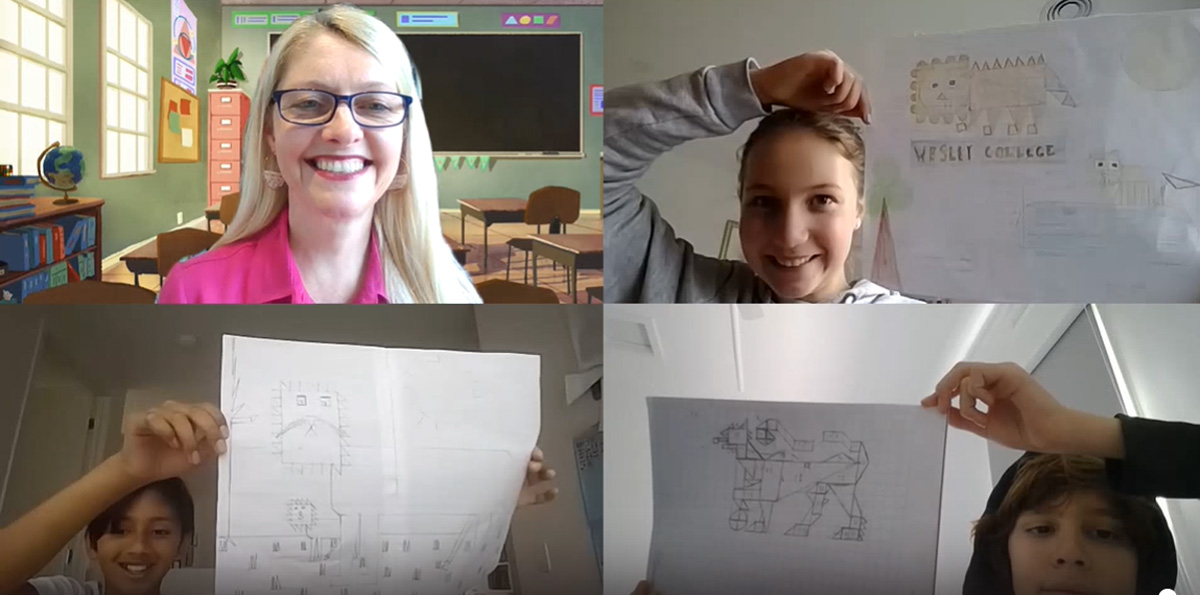<< Back to Lion December 2020 homepage
College snapshots
Maths in many shapes and sizes

Image: Using their mathematical understanding to ‘mathematically design’ Wes the Lion: clockwise from top left, Lanella Sweet with Year 6 students Mareli Opperman, Matthew Rebelo and Aarav Agarwal
Mathematics is all around us, in the size of things, in the relationship or ratio of things and quantities of things, in the chance or probability of things happening, in the shapes and angles we see, even in our Wesley lion.
In the remote environment, Wes the Lion helped PYP enrichment teacher Lanella Sweet explore measurement, angles, lines, points, shapes, space, perimeter and circumference, area, volume and pi with students at Wesley’s Elsternwick Campus.
Year 6 students used their mathematical understanding to ‘mathematically design’ Wes the Lion, a familiar but decidedly irregular composite shape. They explored different ways to find unknown values for angles within triangles and quadrilaterals, and ways to use their measurement and classifying skills.
They started by drawing simple shapes and combining these, demonstrating they could translate their knowledge into this new context.
Then the mathematical creative design began. The investigation involved demonstrating previously learned content, but also practising, refining and improving with feedback. The creative problem-solving process enabled the students to use their mathematical knowledge and skills
in classifying, comparing, explaining, arranging, constructing, calculating, solving, and making hypotheses and generalisations. They were, in the words of Kaye Stacey in Strategies for Problem Solving, expert problem solvers because they ‘constantly monitor(ed) their thinking, evaluating ideas, checking their progress and keeping their work in line with the original goal.’
They used their knowledge obtained from previous attempts and trials to continue toward their goal of finding the most appropriate solution. And they drew on their prior knowledge, skills and tools, unpacking and understanding the necessary steps to reach their goal in demonstrating mathematical knowledge.